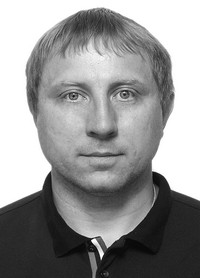PREDICTION OF ADVERSE CHANGES IN THE FUNCTIONAL STATE OF THE HEART IN JUNIOR ATHLETES
Keywords:
cardiovascular system, heart strain, biomarker, predictive value, sensitivity.Abstract
Objective of the study was to evaluate the prognostic significance of markers for the early diagnosis of cardiac overstrain.
Methods and structure of the study. A survey was made of an athlete of the Russian junior national cross-country skiing team (18 years old, 175.5 cm, 68.2 kg, 6 years of experience), who complained of low performance, which had been going on for the past few months. Functional testing of the athlete was carried out on a h/p/cosmos venus 200/100r running treadmill (h/p/cosmos sports & medical gmbh, Germany) with registration of oxygen consumption using the MetaMax 3B ergospirometry system (Cortex, Germany). Before and after the treadmill test, a standard 12-lead ECG was recorded on a Cardisuny C300 electrocardiograph, Fukuda Denshi, Japan. Analysis of blood samples taken by venipuncture was performed on analyzers cobas c 311 and cobas e 411 (Roche, Germany) and an ultrafast liquid chromatography-mass spectrometer with a triple quadrupole LCMS-8060 (Shimadzu, Japan).
Results and conclusions. The ECG after the treadmill test showed signs of a violation of the processes of repolarization of the posterior wall of the myocardium. Analysis of the activity of nonspecific markers and concentrations of cardiospecific proteins showed that the most sensitive, specific and prognostic marker for the detection of minor violations of the contractility of the left ventricle is the N-terminal polypeptide of natriuretic hormone.
References
Volkov N.I., Oleinikov Bioenergetika sporta [Bioenergetics of sports]. Moscow: Sovetskiy sport publ., 2011. 210 p.
Lyakso E.E., Nozdrachev A.D., Sokolova L.V. Vozrastnaya fiziologiya i psikhofiziologiya [Age physiology and psychophysiology]. Moscow: Yurayt publ., 2020. 396 p.
Meyerson F.Z. Adaptatsiya, deadaptatsiya i nedostatochnost serdtsa [Adaptation, deadaptation and heart failure]. Moscow: Medicina publ., 1978. 343 p.
Dorofeikov V.V., Sitnikova M.Yu., Lelyavina T.A. et al. Mozgovoy natriyureticheskiy peptid v kardiologii i kardiokhirurgii [Brain natriuretic peptide in cardiology and cardiac surgery]. Meditsinskiy alfavit. 2014. Vol. 1. No. 3. pp. 49-56.
Seluyanov V.N., Myakinchenko E.B., Gavrilov V.B. Sportivnaya adaptologiya. Fizicheskaya podgotovka v tsiklicheskikh vidakh sporta [Sports adaptology. Physical training in cyclic sports]. Moscow: TVT Divizion publ., 2021. 524 p.
Brancaccio P., Maffulli N., Buonauro R., et al. Serum enzyme monitoring in sports medicine. Clin. Sports Med. 2008. 27(1). pp.1-18.
McCann G.P., Muir D.F., Hillis W.S. Athletic left ventricular hypertrophy: long-term studies are required. Eur. Heart J. 2000. 21(5). pp. 351-353.
Myakinchenko E.B., Kriuchkov A.S., Adodin N.V., et al. One-year periodization of training loads of Russian and Norwegian elite cross-country skiers. J. Hum. Sport Exerc. 2021. 16(2). pp.701-710.
Su Q.S., Zhang J.G., Dong R. et al. Comparison of changes in markers of muscle damage induced by eccentric exercise and ischemia/reperfusion. Scand. J. Med. Sci. Sports. 2010. 20(5). pp. 748-756.


